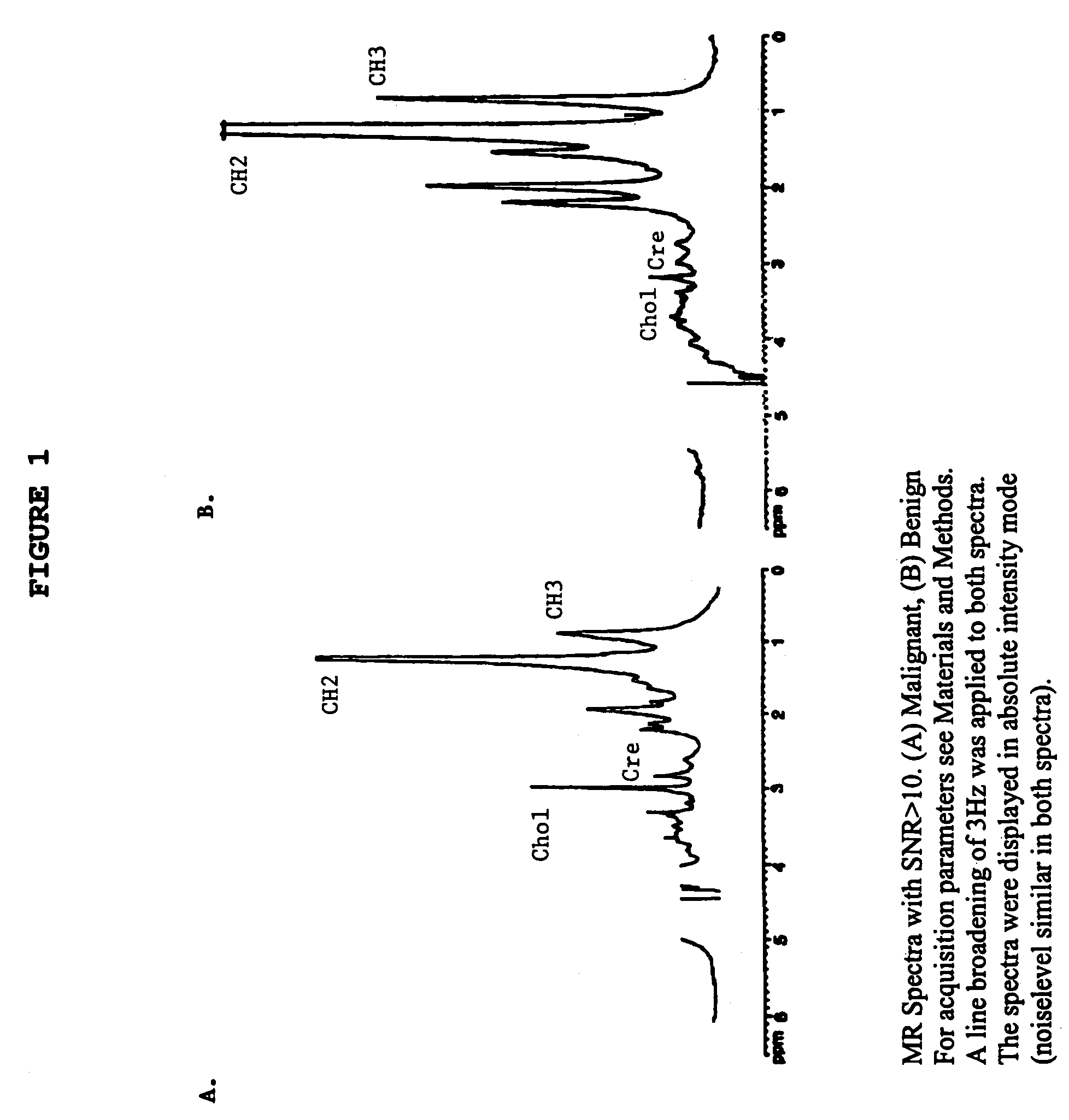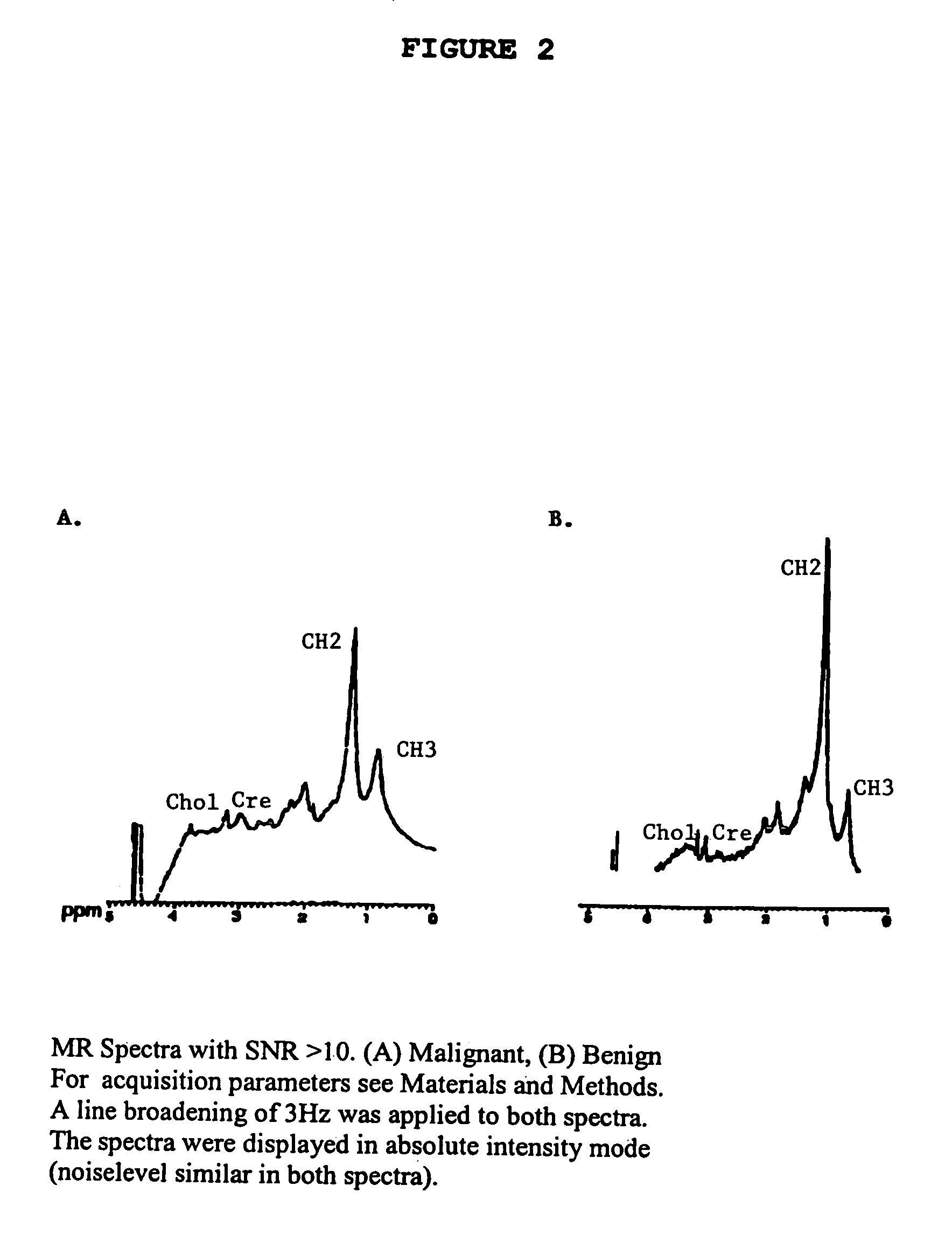Magnetic resonance spectroscopy to classify tissue
- Summary
- Abstract
- Description
- Claims
- Application Information
AI Technical Summary
Benefits of technology
Problems solved by technology
Method used
Image
Examples
Embodiment Construction
Methods
Preparation of Patients:
[0039]Intra-operative FNAB were taken from 139 patients undergoing breast surgery for malignant and benign conditions (Table 1) by three surgeons in separate hospitals. In order to provide a sufficiently large data set for SCS an additional 27 patients joined the study (see Table 1). Impalpable breast lesions that had been localised by carbon track or hook wire were included except if the lesion was not palpable at excision or when the pathology specimen could have been compromised. All samples were taken during surgery under direct vision after the lesion had been identified and incised sufficiently widely to ensure that the FNAB and tissue specimens represented the same lesion and were thus comparable. The lesion was identified and incised in-vivo via the margin with the greatest apparent depth of normal tissue between it and the lesion to ensure the pathologist could report upon the lesion according to a standard protocol. Malignant and suspicious l...
PUM
| Property | Measurement | Unit |
|---|---|---|
| volume | aaaaa | aaaaa |
| temperature | aaaaa | aaaaa |
| chemical shifts | aaaaa | aaaaa |
Abstract
Description
Claims
Application Information
 Login to View More
Login to View More - R&D
- Intellectual Property
- Life Sciences
- Materials
- Tech Scout
- Unparalleled Data Quality
- Higher Quality Content
- 60% Fewer Hallucinations
Browse by: Latest US Patents, China's latest patents, Technical Efficacy Thesaurus, Application Domain, Technology Topic, Popular Technical Reports.
© 2025 PatSnap. All rights reserved.Legal|Privacy policy|Modern Slavery Act Transparency Statement|Sitemap|About US| Contact US: help@patsnap.com



